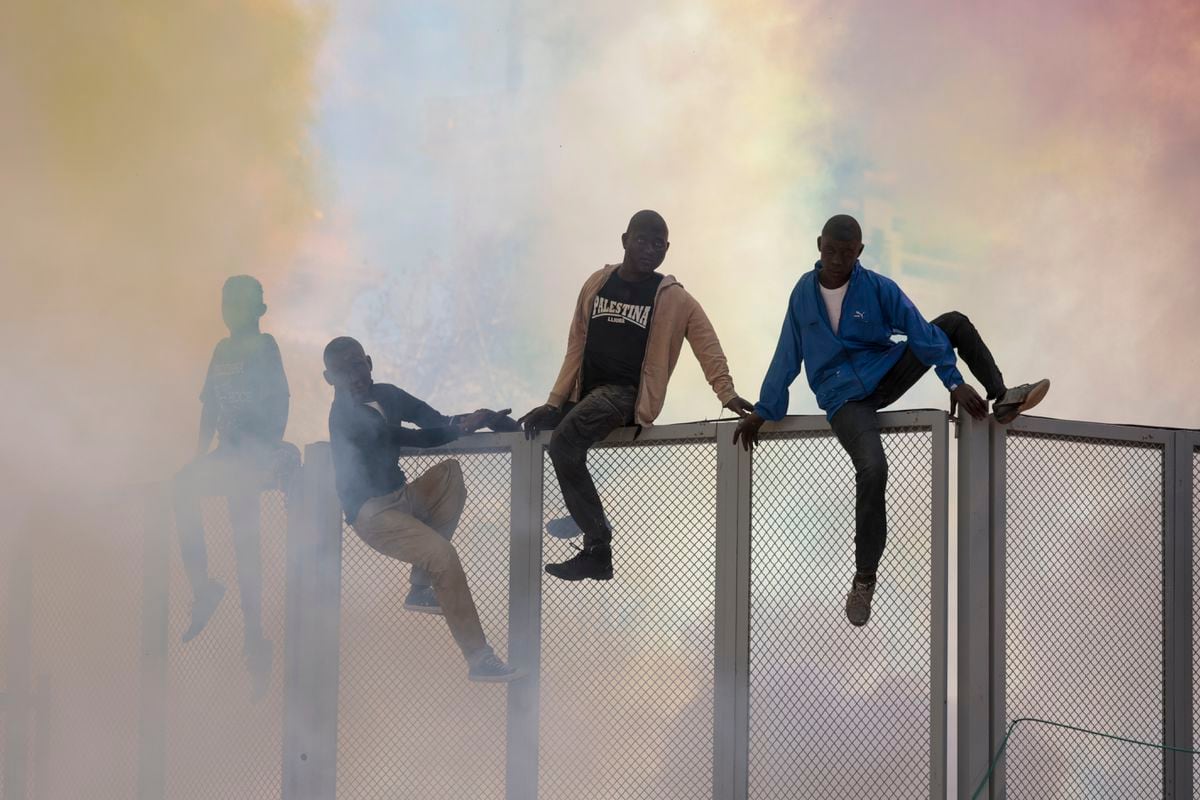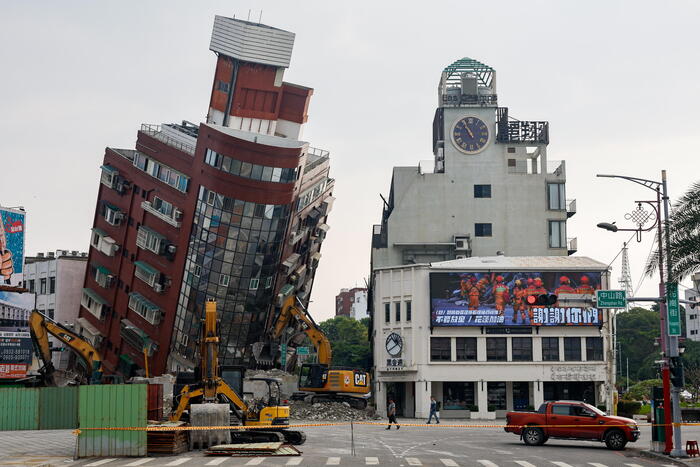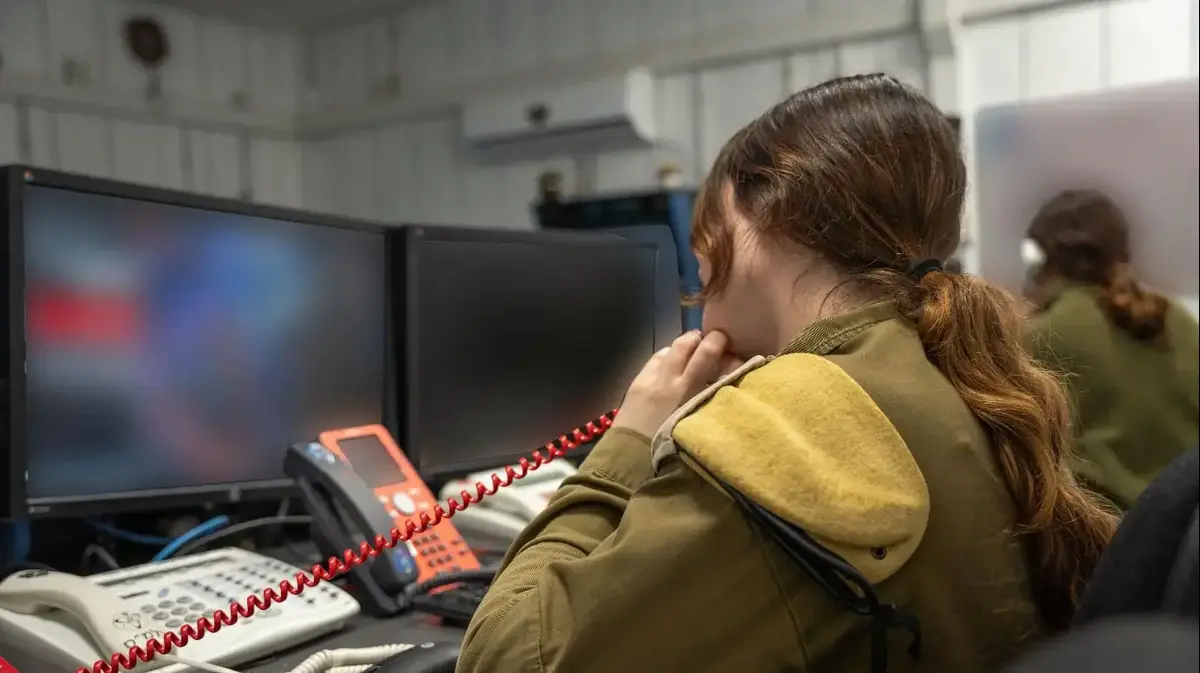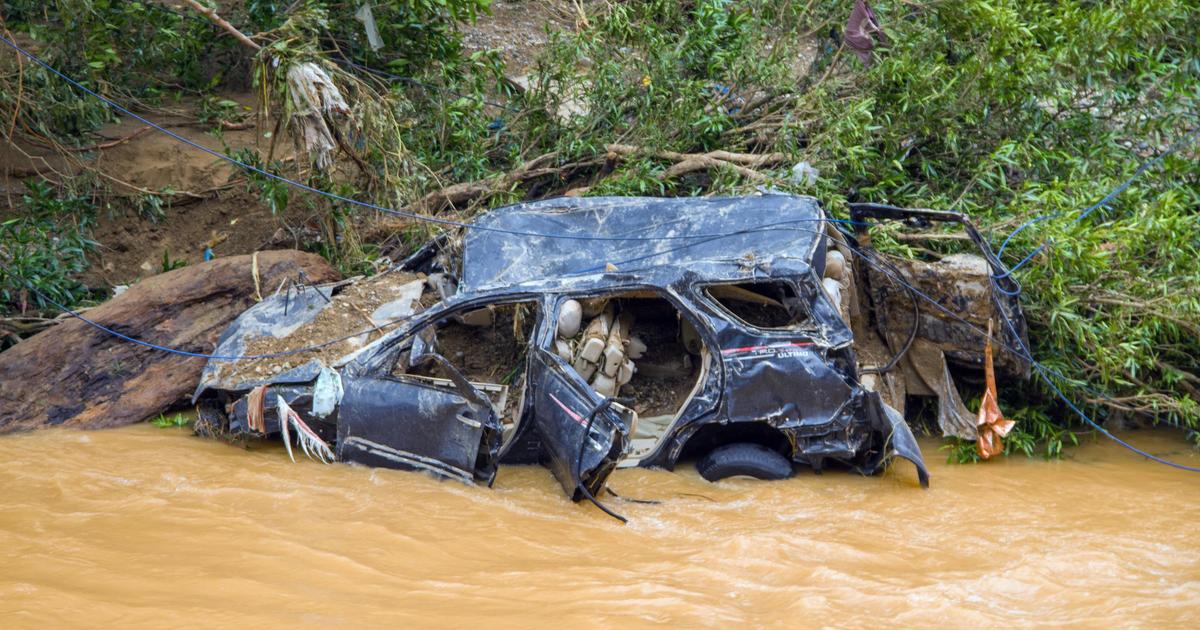AreaRead the video transcript expand here
On June 24, hundreds of people try to cross the border between Morocco and the Spanish enclave of Melilla.
Most of them are refugees from Sudan.
What follows is one of the deadliest incidents at a European land border.
At least 23 people die, 77 are still missing.
Shocking videos later surfaced.
They show extreme police brutality.
According to an organization close to the Moroccan government, the deaths were caused by stampede.
The Spanish government insists that no human rights violations have been committed on the Spanish side.
Fernando Grande-Marlaska, Minister of the Interior of Spain: “I would like to reiterate that the State's security forces and bodies acted in a perfectly legal, proportionate and necessary manner. There have been no casualties on Spanish territory.”
Even five months after the events, important questions remain unresolved: How did this tragedy come about?
On whose territory did people die?
And did Morocco and Spain tell the truth?
To answer these questions, we analyzed all available videos and evaluated previously unreleased footage.
We spoke to more than 40 eyewitnesses, including police officers.
And we matched the footage with a detailed model of the border post where the tragedy happened.
Melilla, an outpost of Spain on the African continent - whoever makes it there has a chance of asylum in Europe.
The area is largely surrounded by four barbed wire fences and a deep ditch.
Spain is working with Morocco to monitor the fence.
Those who dare to jump across the border alone are usually intercepted.
Those seeking protection therefore get together in groups.
The Moroccan police are trying to break up the crowds on the hills near the border.
In the days leading up to June 24, police attacks were unusually violent.
Ameen, name changed, escaped from Sudan: »They came every morning around seven or eight o'clock to drive us out of the forest. We were badly injured.«
Youssef, refugee from Darfur, Sudan: »And then they found our food. We had some rice, some water. All these things they took away from us. And over the megaphone they told us we had 24 hours to get over the wall or go back to town.”
Ibrahim, not his real name, fled Darfur, Sudan: 'The government soldiers used to give people space to retreat to the mountains if they couldn't cross the border. This time it wasn't like that. When we first reached the Barrio Chino border post, we found many soldiers. They didn't stop us or block our way to the fence."
The Moroccan security forces do nothing to prevent the young men from descending the mountain.
When the group sets off, numerous police vans are already in action.
But the police only intervene when the group gets here, at the fence.
The officers attack her from behind.
Instead of climbing over the border fence as usual, the group approaches Barrio Chino.
The border post has been closed for over two years.
Many climb over the wall.
The Moroccan police surround the border post and block all exits.
The refugees are trapped.
We are allowed to visit the interior of the Barrio Chino.
A Spanish Guardia Civil officer guides us through the areas under their direct control.
Reporter: "So the Guardia was up to here, up to this gate?"
Civil Guard officer: "Yes"
Reporter: "And then Morocco?"
Civil Guard official: "Morocco"
The blue zone is controlled by Spain, the black zone by Morocco.
This red gate de facto marks the border between the two countries.
We ask an official from the Spanish Interior Ministry to show the border in the model.
He sends us this sketch.
Several hundred people invade this closed space on the Moroccan side of the Barrio Chino.
Some men try to open the gate with tools.
A Spanish helicopter films the moment.
The video was later leaked to local journalists.
The Moroccan police apparently fired at least twenty tear gas canisters in less than eight minutes.
Using disproportionate amounts of tear gas indoors is against international law.
It can trigger a mass panic.
Bashir, refugee from Darfur, Sudan: »We entered a place that was about 500 square meters. They used a lot of tear gas and threw stones. And we had to stay there, we couldn't get out. We were surrounded and people were injured. It was like war, with smoke and people throwing stones.”
When the fugitives manage to break open the gate, the Moroccan police officers enter the area.
Hundreds of people crowd towards the gate.
Samir, name changed, escaped from northern Sudan: »The gate was forced open. Then people in the crowd were pushed to the ground. And then people died here. You have to imagine the conditions: we inhaled tear gas, we lacked oxygen.«
We ask Samir to show us where people were pinned to the ground.
Samir, name changed, escaped from northern Sudan: »Haneen was among the people who were standing in front of the gate. The crowd pushed him to the ground. Haneen, who was already wounded in the head, fell as people stepped on him. He died half an hour later on the Spanish side of the border post. He died on the Spanish side.'
Spanish authorities insist that no one died on their territory.
And the leaked helicopter footage shows only the first few seconds of the stampede.
The video that shows the decisive minutes afterwards is not yet public.
But three of our reporters were able to watch it on the spot.
It has not been cleared for publication by our sources.
A Guardia Civil officer describes what the video shows.
Guardia Civil officer: 'The moment the gate breaks open, they all run to the gate. Now there's a zoom."
The helicopter's camera zooms in.
She films people being pushed to the ground, apparently on Spanish territory.
The official draws us this sketch.
Reporter: This line separates Morocco and Spain. And here people are squeezed. Is it likely that people died here?”
Guardia Civil officer: "Probably, yes, we don't rule it out. It is likely that there are some here. And it is more likely that there are more here. But there may be some here. And there may be some whose body is half on one side and half on the other side. When a country is divided by a line - a person takes up more space than a line.«
This leaked Spanish drone video was captured about 15 minutes after the scrum started at the gate.
It shows Spanish officials holding back those who had made it to the Spanish side.
We zoom in on the area behind the border gate, where people were still crowded at this point.
Moroccan officials are seen beating people with batons.
Journalists in Melilla filmed the same moment.
These previously unreleased footage show the Civil Guard's response.
Here, too, people are beaten.
Sam, 17, fled South Kordofan in Sudan: »The Spanish police surrounded us and continued to use tear gas. I couldn't see anything, my eyes were watering, my nose was running, I lost consciousness. They tied our hands, then opened the gate and took us, one by one, to the Moroccan side.”
Moroccan officials enter Spain through this corridor.
And start bringing people back to Morocco.
These actions are called pushbacks – those seeking protection are denied the right to apply for asylum.
Repatriation is illegal when a person is at risk of being mistreated on the other side of the border.
On June 24, an estimated 470 people will be pushed back into Morocco.
Spanish authorities say they have focused on controlling people outdoors.
And does not participate in border protection within the border post - neither during the deadly crush nor afterwards.
The Moroccans take control and evacuate both the Spanish and Moroccan sides of the Barrio Chino.
The videos of the action are particularly shocking,
they challenge part of the Spanish account of what happened that day.
We spoke to several of the people featured in this clip.
This man, Ibrahim, reports that his friend Anwar was killed.
Ibrahim, from North Darfur: You may have seen Anwar on video. He was killed right before my eyes. There was heavy tear gas shelling, which choked many. Then a Moroccan soldier hit him on the back of the head. And though he couldn't breathe, another soldier jumped onto his chest with his boots. When they found he was dead, they gathered up all the rubbish and covered him with it.”
This is Abdul Aziz Yacoub, nicknamed Anwar, Ibrahim's friend.
When his body is taken away by Moroccan forces, Anwar is lying at the border gate on the Spanish side.
Other people in the picture are apparently unconscious or dead, also in Spain.
Moroccan officials are seen pulling a human back into their territory.
The refugees are brought to this area just before the border post on the Moroccan side.
Here they are left for hours with their hands tied behind their backs.
Some of them with visible wounds.
Many are beaten while lying helpless on the ground.
Sam, 17, refugee from South Kordofan in Sudan: “They handed us over to the Moroccans, who started beating everyone until many were unconscious. Then they threw us onto the open space in front of the gate. There we lay on the floor in direct sunlight for about four hours. When I was brought back, I found many dead bodies on the ground. I was thrown on two dead bodies. They dragged me and threw me on these two bodies after brutally beating me.«
Youssef, refugee from Darfur, Sudan: »We have seen very, very bad things. Some people needed help at that moment, they needed an ambulance. But they didn't care about the ambulance or about us. They said: You are an animal, you must die.«
We were able to determine when these videos were recorded.
The timing shows that those seeking protection lay in the sun for at least three hours.
At no time in the videos do you see paramedics caring for the refugees on the Moroccan side.
Ambulances are on site but are also reportedly being used to evacuate the dead.
On the Spanish side, an ambulance is parked about 100 meters from the border.
According to Spanish information, he could not get closer for safety reasons.
Without an autopsy, there is no way of knowing for sure how people died.
What is certain, however, is that large quantities of tear gas were used in a closed area.
That people were beaten several times and that asylum seekers received no medical help for hours after the deadly crush.
The Spanish government insists that its officials acted lawfully.
Only the Moroccan government has to justify any human rights violations.
But even on Spanish territory, people were pushed to the ground in the crowd.
And Spanish officials have forced back nearly 500 people despite the danger on the other side.
The leaked helicopter and drone footage shows how closely Spanish officials have been monitoring Moroccan actions.
They knew what was happening on the other side.
Only the Moroccan government has to justify any human rights violations.
But even on Spanish territory, people were pushed to the ground in the crowd.
And Spanish officials have forced back nearly 500 people despite the danger on the other side.
The leaked helicopter and drone footage shows how closely Spanish officials have been monitoring Moroccan actions.
They knew what was happening on the other side.
Only the Moroccan government has to justify any human rights violations.
But even on Spanish territory, people were pushed to the ground in the crowd.
And Spanish officials have forced back nearly 500 people despite the danger on the other side.
The leaked helicopter and drone footage shows how closely Spanish officials have been monitoring Moroccan actions.
They knew what was happening on the other side.
Ameen, a refugee from Sudan: »I would blame both the Moroccans and the Spaniards for this crime. Because the migrants were attacked by both. Some people were beaten on Spanish territory and lost their lives after being brought back to the Moroccan side.«
After the stampede, Moroccan officials are said to have taken hundreds of survivors to remote parts of the country in at least eight buses.
According to eyewitnesses, they are said to have simply left the people there without worrying about their injuries.
At least one person reportedly died during the bus ride.
The official death toll is 23. But families of 77 people are still searching for their loved ones.


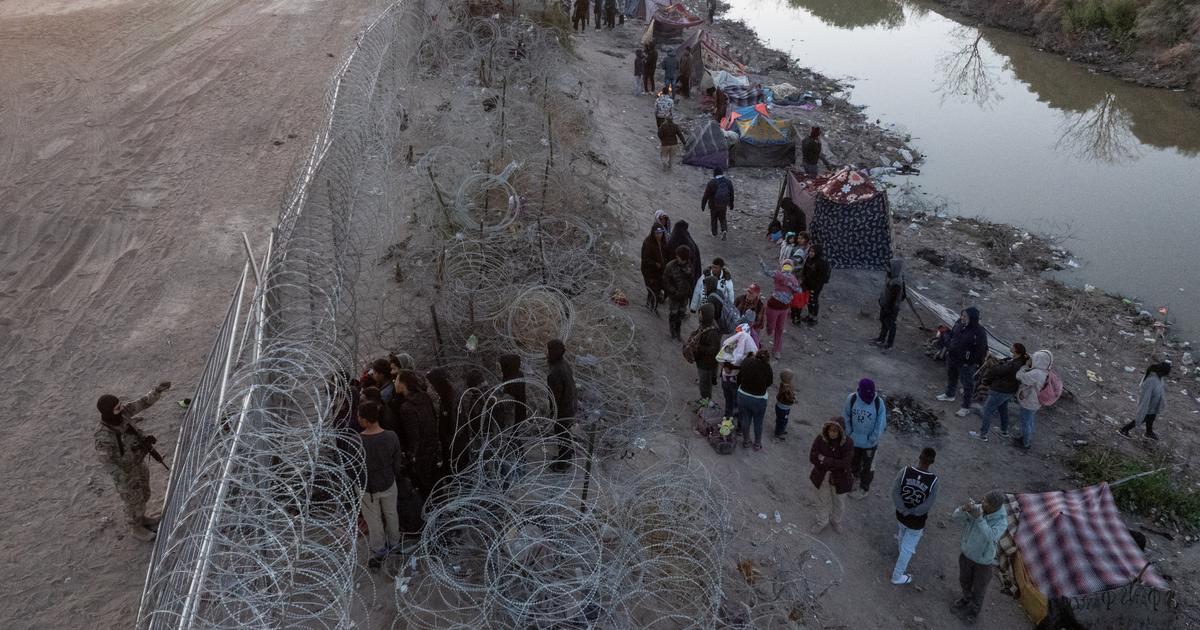

/cloudfront-eu-central-1.images.arcpublishing.com/prisa/WPWGX6DIRZA3DAQ7GEHRNPNOLQ.jpg)
